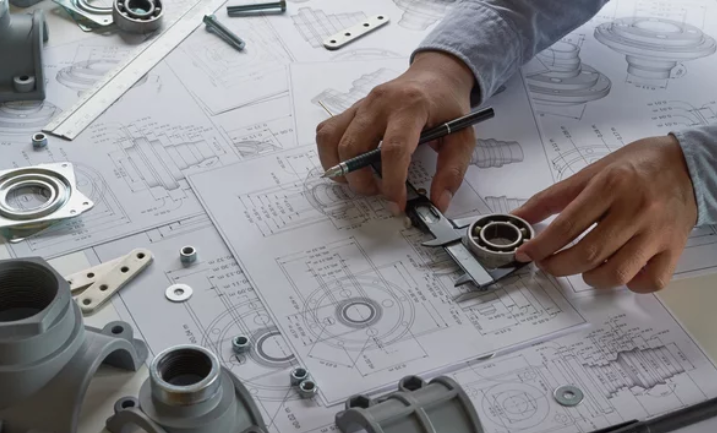In the field of engineering, precision is not merely a preference; it is a fundamental requirement. Every calculation, measurement, and conversion can have significant implications for the integrity and success of a project. Among these calculations, unit conversions hold a critical place. Whether it’s converting lengths from meters to feet, weights from kilograms to pounds, or pressures from pascals to psi, precision in these conversions is paramount. This blog post delves into the importance of precision in engineering unit conversions, exploring the potential consequences of inaccuracies, the role of technology in ensuring precision, and best practices for engineers.
Check out our Types of Unit Converters
Understanding Unit Conversions in Engineering
Unit conversions are essential in engineering for several reasons:
- Global Collaboration: Engineers often work in diverse teams across different countries where varying units of measurement are used. For example, the metric system (meters, liters, kilograms) is commonly used worldwide, while the imperial system (feet, gallons, pounds) is prevalent in the United States. To ensure effective communication and collaboration, precise conversions between these units are essential.
- Regulatory Compliance: Many engineering projects must adhere to strict regulations and standards, which may specify particular units of measurement. For instance, civil engineering projects often require measurements in metric units for compliance with local building codes. Accurate conversions ensure that all project specifications are met.
- Material Specifications: Different materials may have specifications provided in different units. For example, tensile strength may be given in megapascals (MPa) in one region and pounds per square inch (psi) in another. Engineers need to convert these specifications accurately to ensure materials are used correctly in their applications.
- Safety and Functionality: The safety and functionality of engineering projects depend heavily on precise measurements and conversions. A minor error in unit conversion could lead to catastrophic failures, especially in fields like civil, aerospace, and mechanical engineering, where safety is paramount.
The Consequences of Inaccurate Unit Conversions
Inaccurate unit conversions can lead to various negative consequences, including:
- Structural Failures: In civil and structural engineering, an incorrect conversion can result in inadequate support structures, leading to failures or collapses. For instance, miscalculating load-bearing capacities due to unit conversion errors can have dire consequences.
- Cost Overruns: Inaccurate conversions can lead to purchasing the wrong amount of materials or using the incorrect specifications, causing significant cost overruns. This can delay projects and strain budgets, potentially jeopardizing the project’s success.
- Safety Hazards: In fields such as aerospace and automotive engineering, where safety is critical, incorrect unit conversions can result in the design of unsafe components. This can endanger lives and lead to severe legal repercussions.
- Loss of Reputation: Engineers and engineering firms are often held to high standards of accuracy and reliability. Failing to deliver precise results can damage a firm’s reputation and lead to the loss of clients and contracts.
The Role of Technology in Ensuring Precision
Advancements in technology have played a significant role in enhancing the precision of engineering unit conversions. Here are some of the ways technology contributes to this precision:
- Advanced Software Tools: Engineering software often includes built-in unit conversion tools that automatically handle conversions with high precision. These tools are designed to account for various unit systems and provide accurate results based on established scientific standards.
- Digital Calipers and Gauges: Modern measurement tools, such as digital calipers and gauges, offer high precision in measurements and can convert between units on the spot. These tools minimize human error in measurement and conversion processes.
- Online Unit Converters: Many online tools provide quick and precise unit conversions, catering to a wide range of engineering disciplines. These tools often have updated databases that ensure accuracy, allowing engineers to access reliable conversions quickly.
- Programming Languages: Engineers often use programming languages (like Python or MATLAB) to create custom conversion scripts. This allows for precise conversions tailored to specific project requirements, eliminating human error in manual calculations.
Best Practices for Engineers in Unit Conversions
To ensure precision in unit conversions, engineers should follow these best practices:
- Double-Check Calculations: Always verify conversion calculations, either through manual checking or using multiple tools. A second opinion can catch errors that might be overlooked during initial calculations.
- Use Reputable Sources: When converting units, rely on trusted engineering resources, textbooks, or software to ensure accuracy. Avoid using questionable online sources that may provide outdated or incorrect information.
- Understand the Units: Familiarity with both the original and target units is crucial. Engineers should understand the relationship between different units and the context in which they are used to avoid confusion.
- Keep Up with Standards: Engineering standards and conversion factors can evolve. Engineers should stay updated on relevant standards (such as those from ASTM, ISO, and ASME) to ensure compliance and accuracy in conversions.
- Educate and Train Staff: Ensure that all team members understand the importance of precision in unit conversions. Training sessions and workshops can help reinforce best practices and reduce the likelihood of errors.
Try out our Free Math and English Worksheet Generators
Precision in engineering unit conversions is not just a matter of convenience; it is a critical aspect that can significantly impact the success and safety of projects. Engineers must recognize the potential consequences of inaccuracies and utilize technology to enhance precision. By adopting best practices and leveraging advanced tools, engineers can minimize errors, ensure compliance, and deliver reliable results. As engineering continues to evolve and global collaboration increases, the importance of accurate unit conversions will only continue to grow. Emphasizing precision will ultimately lead to safer, more efficient engineering solutions that stand the test of time.
